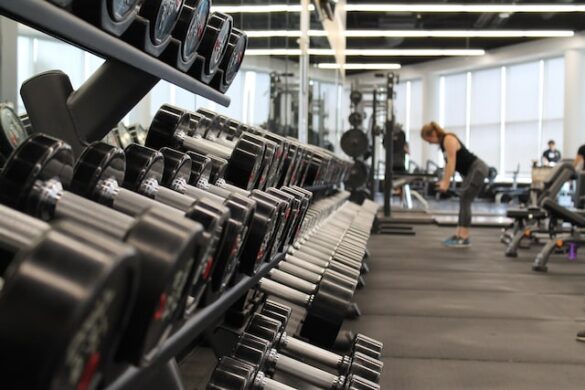Imagine sitting at home one day, wanting to prepare for swimsuit season. Eager to change your lifestyle, you’ve decided to get into working out. Then it hits you — realizing the inconveniences of going to the gym.
The monthly fees are steep. Parking is a nightmare. Let’s not start with the decision to pick gym outfits or programs.
Wouldn’t it be better to stay at home and get the results you’d have at a real gym? If you’ve been in this situation, I have good news.
A home workout program can get you better results!
With creativity, some space, and an eagerness to sweat it out, you’ll have better body composition, improved energy levels, and crushing strength. You can experience these and more from the comfort of your living room.
Of course, results come if you’ve written yourself a great home workout program. I’ve got you if you need a home workout program covering all your fitness bases.
This article will provide some of the most effective tips for creating a home workout program that matches your fitness goals and circumstances.
Speaking of goals, let’s start with that.
Write Down Your Fitness Goals
As you make a home workout program, you must begin with your fitness goals. After all, not all fitness goals are the same.
You may be coming. You may want strength to lift groceries, kids, or pets. Maybe you want a new bodyweight skill like your first muscle-up.
Whatever your reasons are, your fitness goal will dictate your home workout program’s structure, movement selection, and frequency.
For skill acquisition, your intensity has to be low but frequent — and I do mean frequent.
If you’re gassing out and want to improve your VO2 max, running three days a week should be in your program.
Do you need more strength? If so, resistance-based workouts should be a large part of your home workout program.
You get the picture. In short, it’s all about “beginning with the end in mind,” as Stephen Covey said.
Take Stock of Your Resources and Invest as Necessary
Once you’ve got your goals, you must see what you can use at home. In one of my blogs on workouts, I mentioned how important it is to ask yourself what equipment you have.
Home workouts don’t have to be equipment-intensive. Less is often better. Once again, it all depends on your goals.
If you want to build maximum strength at home, I can think of no better substitute for a rack, barbell, and some plates. You’ll have to invest in these pieces of equipment if you don’t have them already.
However, you can get by on your body weight for general fitness. You can also add a few dumbbells or kettlebells and a yoga mat. With some space, you’ll be gold.
If cardiovascular endurance is your main goal, you can always walk or run outside. You can add resistance to your walks with a loaded backpack — something everyone will likely have.

Plan Your Frequency
How often you perform your home workouts will depend on your schedule, goals, and your ability to recover.
Expect some experimentation during this phase of your home workout program creation. You may find yourself scaling up or down depending on how you feel or what your schedule allows. However, as a rule, shoot for anything between two to four sessions weekly.
You can bump the frequency to seven days for low-intensity skill work since recovery won’t be an issue.
Besides how often you’ll work out, you’ll also need to dial in how often you rest. After all, you can only get stronger or progress from a workout if you can recover.
How often should your rest days be? Healthline says the number of rest days depends on your program and goals.
If you’re working towards more lean muscle and strength, have a rest day in between your workout sessions.
With cardio, it’s a little tricky. You’ll need to schedule at least two rest days. However, be prepared to throw another rest day, depending on how tired you feel.
Cover the Basic Movement Patterns
Keep things simple but effective if you’re new to planning a home workout program. In my experience, simple and effective programs incorporate basic movement patterns in every session.
As humans, we can perform five basic movements. World-famous strength and conditioning coach Dan John enumerates and explains them well in this video. These are:
- Squatting (bodyweight squats, back squats, front squats)
- Pulling (rows, pullups, chin-ups)
- Hinging at the hip (deadlift, kettlebell swing)
- Pushing (pushups, bench presses, floor presses)
- Carrying things at a distance
Your workouts should have a variation of each movement. For example, here’s how I’d program a three-day workout with all five movements.
Monday
- Bodyweight lunges: 3×15
- Pullups or chin-ups: 8×2
- Dumbbell presses: 3×8
- Dumbbell deadlifts: 3×15
- A farmer walks with dumbbells: Five rounds up and down the street
Wednesday
- Dumbbell front squats: 3×10
- Dumbbell rows: 3×10
- Pushups: 3×10-15
- Hip bridges: 3×20
- A farmer walks with dumbbells: Five rounds up and down the street
Friday
- Goblet squats with dumbbell or kettlebell: 3×10
- Single-arm dumbbell rows: 3×10 on each side
- Single-arm dumbbell floor presses: 3×10 on each side
- Single-arm Romanian deadlift with dumbbell or kettlebell: 3×8 on each side
- A farmer walks with dumbbells or kettlebells: Five rounds up and down the street
Feel free to switch to barbell versions of the movements if you have a barbell. You’ll be good to go as long as you’re performing the five basic movements.
You might be asking me now: “Where do I put cardio?”
As a cardio fan myself, I’m glad you asked.
Use the 150-minute Rule When Programming Cardio.
The 150-minute rule comes from the American College of Sports Medicine (ACSM). According to the ACSM, you need about 150 minutes of cardiovascular activity weekly to reap the benefits.
Fitting 150 minutes into your home workout program isn’t as daunting as it seems. You can sprinkle it in any time if you meet the 150-minute-per-week guideline. Try not to go too hard on running the whole time.
Also, if you prioritize cardio over strength and lean muscle, your cardio workouts can be more frequent than your resistance-based work. Here’s an example.
Monday
- Bodyweight lunges: 3×15
- Pullups or chin-ups: 8×2
- Dumbbell presses: 3×8
- Dumbbell deadlifts: 3×15
- A farmer walks with dumbbells: Five rounds up and down the street
Tuesday
- Walk for 60 minutes
Wednesday
- Dumbbell front squats: 3×10
- Dumbbell rows: 3×10
- Pushups: 3×10-15
- Hip bridges: 3×20
- A farmer walks with dumbbells: Five rounds up and down the street
Thursday
- Ride your bike or follow one of these HIIT home workouts for 20 minutes
Friday
- Walk leisurely for 40 minutes
Saturday
- Jog or ride your bike for 30 minutes
The resistance work must still be in your cardio program for injury prevention. However, the resistance-based days slid down to two days with the cardio frequency ramped up.
If you do the math, you’ll find that the cardio work adds up to 150 minutes a week.

Get Leaner and Fitter at Home!
As you’ve just seen, working out at home involves no more than a few simple movements and pieces of equipment. With a home workout program that cares for all aspects of your fitness, you’ll build yourself into a sculpted well-rounded athlete just in time for the summer.
Motivation is essential when following your home workout program. If you’re running low on it, check out these motivational quotes to get you off your rut and in your workout gear!
FAQs:
What is the best home workout program?
The best home workout program is customized to your fitness goals, abilities, and resources. You can follow this article’s recommended home workout program to improve your overall well-being.
Is it effective to work out at home?
Yes, working out at home is a highly effective and reliable way of achieving your fitness goals. Studies also show that home workouts are as effective as gym workouts.
What is a good five-day workout routine at home?
Monday
Bodyweight lunges: 3×15
Pullups or chin-ups: 8×2
Dumbbell presses: 3×8
Dumbbell deadlifts: 3×15
A farmer walks with dumbbells: Five rounds up and down the street
Tuesday
Walk for 60 minutes
Wednesday
Dumbbell front squats: 3×10
Dumbbell rows: 3×10
Pushups: 3×10-15
Hip bridges: 3×20
Farmer walks with dumbbells: Five rounds up and down the street
Thursday
Ride your bike or follow one of these HIIT home workouts for 20 minutes
Friday
Walk leisurely for 40 minutes
Are 20-minute home workouts effective?
Overall, 20-minute home workouts can be effective when carefully crafted to be high-intensity. However, their exact effectiveness heavily depends on your fitness level and goals.
Sources:
https://www.mayoclinic.org/healthy-lifestyle/fitness/in-depth/fitness/art-20048269
https://myfitstation.com/the-lose-the-last-10-pounds-workout/
https://www.healthline.com/health/exercise-fitness/rest-day#doing-rest-right
https://www.acsm.org/read-research/trending-topics-resource-pages/physical-activity-guidelines
https://www.youtube.com/watch?v=-aIv5uAWRPo
https://myfitstation.com/what-to-know-when-deciding-on-the-best-womens-workout-program/
https://myfitstation.com/top-10-benefits-of-running/








